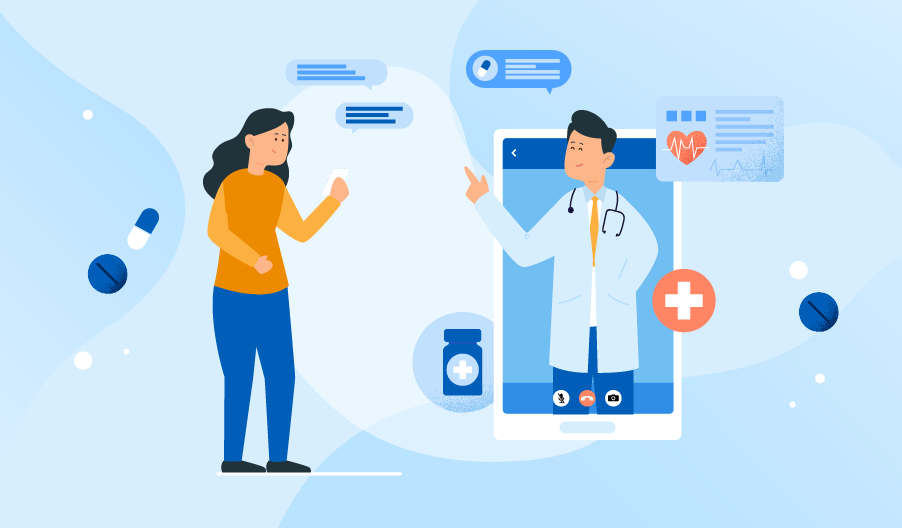
With the current COVID-19 situation, more and more medical offices have been switching to telemedicine. This trend is expected to become the norm even after the COVID-19 restrictions are lifted. Therefore, there is a huge opportunity for the development of telehealth apps.
Here is a look at how to build a telehealth app.
Table of Contents
What The App Will Require
Before you take a look at the steps that are needed to build the telemedicine app, you should know what components should be built into the app. Here are the top features required for any telemedicine app.
1). Ensure Secure Video Calling
This most important part of any telemedicine app is that it can support secure video calling. That is because the app must be HIPPA compliant. That means that the app can support doctor-patient confidentiality. Also, the video should be able to handle real-time communication between both parties. That is because the physician must be able to see any visual cues of illness from the patient in real-time in order to make his assessment.
2). Allow Peer-to-Peer Chat
In addition to real-time video conferencing, the app should also allow for rich messaging between both parties. This will allow the physician or the healthcare provider to send instructions to the patient in case video conferencing is not available.
3). Backend Database Building
With some specialties, such as neurology, you will need to make sure that the app is able to have a backend database for patient information, medical history, labs, and imaging.
4). Appointment Scheduling
You will also want to make sure that the patient will be able to schedule an appointment with the service care provider. This will allow the patient to easier schedule the next appointment.
5). Allow for Group Chat
In some cases, the physician or the health care provider will want to bring other colleagues onto a call. Therefore, it is important that the app will be able to enable group chats.
6). Allow e-Prescriptions
Many patient calls will involve prescriptions. To ensure that the patient is able to quickly get his prescriptions, the app should have an e-prescription feature that can send the prescription directly to the pharmacist.
Now that you know what needs to be in a telemedicine app, here are the four steps you can take to build the app.
1). Choosing the Right Platform
Currently, iPhone makes up for 55% of smartphone devices while Android makes up the other 45%. Therefore, you will want to make sure that the app can support both iOS and Android users.
When choosing a desktop platform, you will want to consider Saas since it will be easier to build. Saas does come with a monthly fee. However, it will be easier to manage in the long run versus a custom build.
2). User Experience
It is important that the user experience is as seamless as possible since many users of telemedicine apps will be older. Test different colors and button sizes to see what will work best.
3). Choose the Right APIs to Integrate Into Your App
There are a number of APIs that can work directly into a telemedicine app. This will help reduce the time it would take to custom build your own API. Some of the top APIs to consider include VSee Desk, Vidyo, OpenTok, and WebRTC.
4. Test and Deploy Your App
After you have built your app, you will then need to test it. Make sure you have peer code reviews of the app and have the QA team carry out tests on various devices. Finally, perform a stress test to see if the app can handle a large number of uses.
After testing, it is finally time to deploy. After the app has bee launch, be sure to check for annual updates from Android and iOS to keep the app current.





More Stories
Download Naruto Senki Mod APK Latest Version for Unlimited Skill and Money
Viper Play Net Soccer Apk and 7 Best Similar Alternatives to Watch Football League Matches
Best mobile number tracker with google map